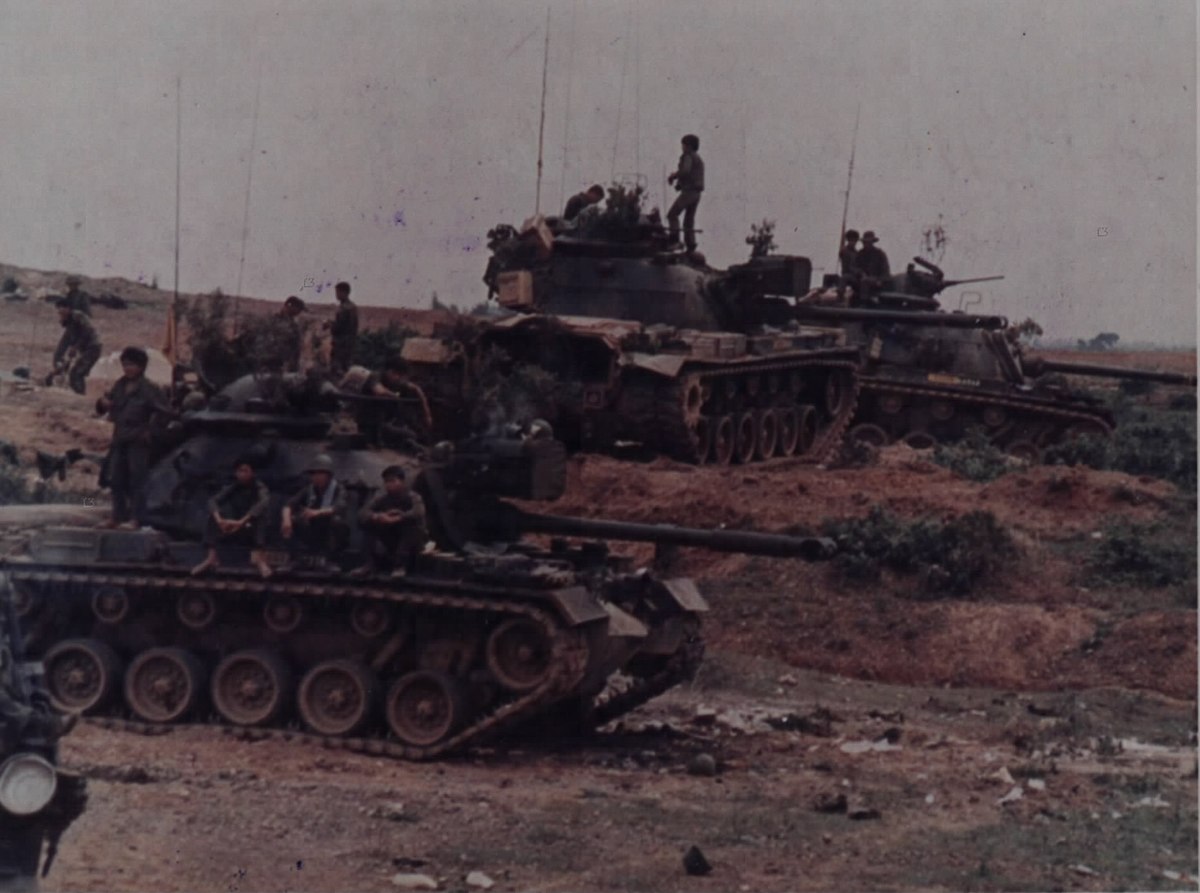
Easter Offensive
Quảng Trị, VietnamThis conventional invasion (the largest invasion since 300,000 Chinese troops had crossed the Yalu River into North Korea during the Korean War) was a radical departure from previous North Vietnamese offensives. The offensive was designed to achieve a decisive victory, which even if it did not lead to the collapse of South Vietnam, would greatly improve the North's negotiating position at the Paris Peace Accords.
The U.S. high command had been expecting an attack in 1972 but the size and ferocity of the assault caught the defenders off balance, because the attackers struck on three fronts simultaneously, with the bulk of the North Vietnamese army. This first attempt by the Democratic Republic of Vietnam (North Vietnam) to invade the south since the Tet Offensive of 1968, became characterized by conventional infantry–armor assaults backed by heavy artillery, with both sides fielding the latest in technological advances in weapons systems.
In the I Corps Tactical Zone, North Vietnamese forces overran South Vietnamese defensive positions in a month-long battle and captured Quảng Trị city, before moving south in an attempt to seize Huế. The PAVN similarly eliminated frontier defense forces in the II Corps Tactical Zone and advanced towards the provincial capital of Kon Tum, threatening to open a way to the sea, which would have split South Vietnam in two. Northeast of Saigon, in the III Corps Tactical Zone, PAVN forces overran Lộc Ninh and advanced to assault the capital of Bình Long Province at An Lộc.
The campaign can be divided into three phases: April was a month of PAVN advances; May became a period of equilibrium; in June and July the South Vietnamese forces counter-attacked, culminating in the recapture of Quảng Trị City in September. On all three fronts, initial North Vietnamese successes were hampered by high casualties, inept tactics and the increasing application of U.S. and South Vietnamese air power. One result of the offensive was the launching of Operation Linebacker, the first sustained bombing of North Vietnam by the U.S. since November 1968. Although South Vietnamese forces withstood their greatest trial thus far in the conflict, the North Vietnamese accomplished two important goals: they had gained valuable territory within South Vietnam from which to launch future offensives and they had obtained a better bargaining position at the peace negotiations being conducted in Paris.
